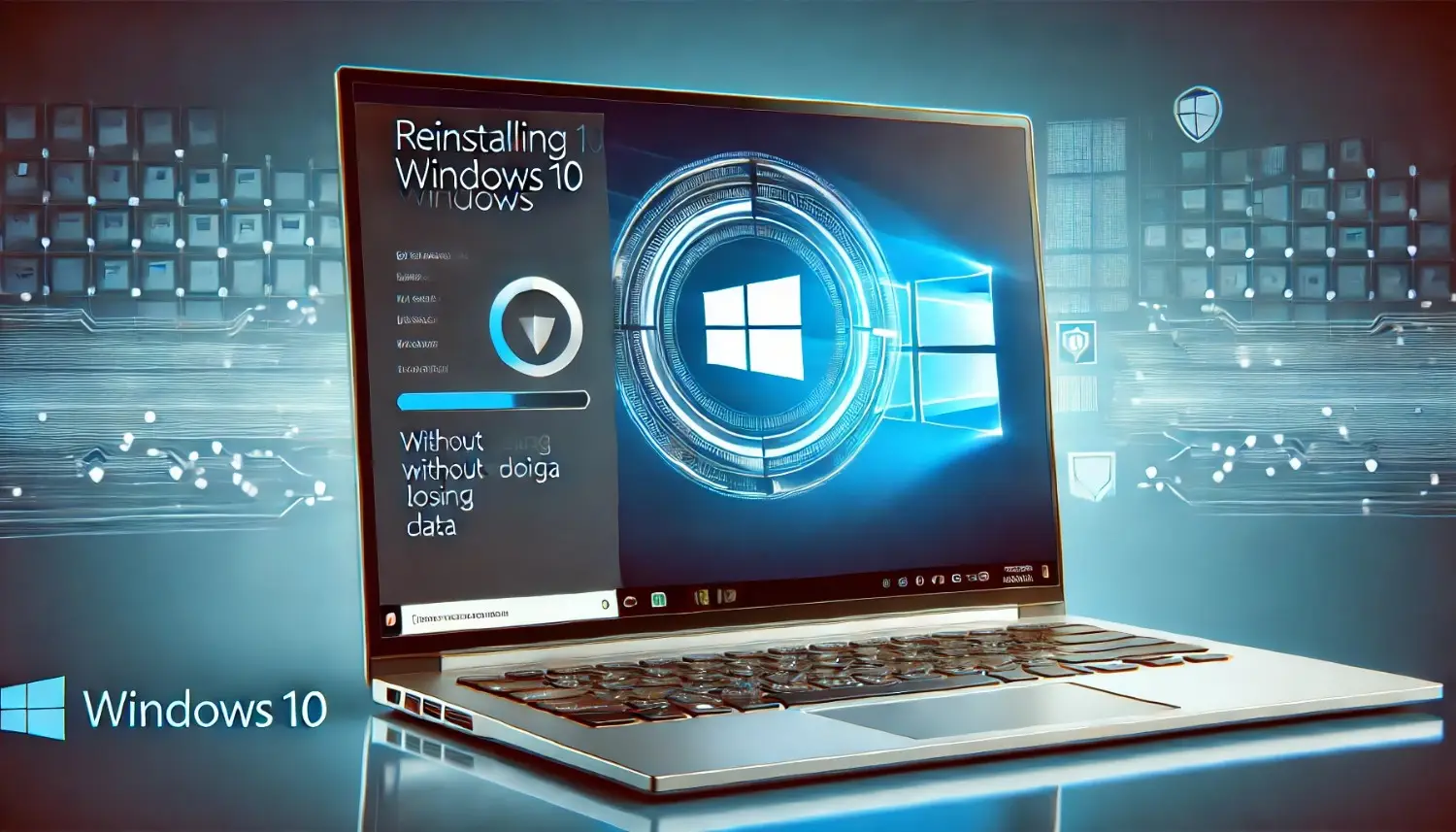If your Windows 10 PC is running slow, facing system errors, or experiencing frequent crashes, reinstalling Windows 10 can help. But what if you don’t want to lose your files, apps, or settings? The good news is that you can reinstall Windows 10 without losing data using built-in options.
This guide will walk you through different methods to reinstall Windows 10 while keeping your personal files safe.
Table of Contents:
Why Reinstall Windows 10?
Over time, Windows 10 can develop issues that slow down performance. Some common reasons to reinstall include:
- Slow performance – Your system struggles due to junk files, software conflicts, or malware.
- Frequent crashes or errors – Blue Screen of Death (BSOD), driver failures, or software corruption may occur.
- Corrupted system files – Built-in repair tools like SFC and DISM might fail to resolve the problem.
- Failed Windows updates – Bugs or instability may arise after system updates.
- Removing unwanted software – A fresh reinstall eliminates unnecessary apps causing conflicts.
If you’re experiencing any of these problems, reinstalling Windows 10 can help restore stability and performance.
3 Ways to Reinstall Windows 10 Without Losing Data
There are three main methods to reinstall Windows 10 while keeping your files intact:
- Using the “Reset this PC” Option (Keeps files, removes apps)
- Using the Windows Installation Media (Reinstalls system files, keeps everything)
- Using an In-Place Upgrade via the Windows 10 ISO (Repairs system, keeps apps & files)
Let’s go through each method step by step.
Method 1: Reset This PC (Keeps Your Files, Removes Apps)
Windows 10 has a built-in Reset this PC feature that lets you reinstall the OS while keeping your personal files. However, installed apps and drivers will be removed.
Steps to Reset Windows 10 Without Losing Data:
1.Open Settings
- Press Win + I to open Settings.
- Click on Update & Security > Recovery.
2.Start the Reset Process
- Under Reset this PC, click Get started.
3.Choose “Keep My Files”
- Select “Keep my files” to ensure your personal data isn’t deleted.
- Windows will remove apps and reset settings but won’t touch personal files.
4.Follow the On-Screen Instructions
- Click Next and Reset to begin the process.
- Your PC will restart and reinstall Windows 10.
What Happens After the Reset?
Once the reset is complete, your personal files remain safe, but installed programs (except built-in Windows apps) will be removed. Additionally, Windows settings will return to default, which can help resolve configuration issues.
If you want to keep both files and apps, check out Method 3 below.
Method 2: Reinstall Windows 10 Using Installation Media
This method reinstalls Windows 10 while keeping your files, apps, and settings intact. It requires a bootable USB drive or an ISO file.
Requirements:
✔ A USB drive (8GB or more)
✔ Windows 10 installation media (Download from Microsoft’s official website)
Steps to Reinstall Windows 10 Without Losing Data:
1. Create Windows 10 Installation Media
- Download Media Creation Tool from Microsoft.
- Run the tool and select Create installation media (USB flash drive, DVD, or ISO file) for another PC.
- Follow the instructions to create a bootable USB.
2. Boot from the USB Drive
- Insert the USB drive and restart your PC.
- Press the boot key (F12, F2, DEL, or ESC, depending on your manufacturer).
- Select the USB drive as the boot device.
3.Start the Windows 10 Reinstallation
- Click Install Now.
- Select Upgrade: Install Windows and keep files, settings, and applications.
4.Complete the Installation
- Follow on-screen instructions.
- After installation, your files, apps, and settings will remain intact.
This method is useful when your system is not booting properly but you still want to keep all your files and programs.
Method 3: Perform an In-Place Upgrade with Windows 10 ISO
An in-place upgrade reinstalls Windows 10 over your existing installation without deleting anything. It’s one of the safest ways to fix system issues while keeping everything intact.
Steps to Reinstall Windows 10 Without Losing Data:
1.Download Windows 10 ISO
- Go to Microsoft’s website.
- Download the Windows 10 ISO file.
2.Mount the ISO File
- Right-click the ISO file and select Mount.
- Open the mounted drive and run setup.exe.
3.Choose to Keep Files and Apps
- Select “Upgrade this PC now”.
- Choose “Keep personal files and apps”.
4.Start the Installation
- Click Next, then Install.
- Windows 10 will reinstall while keeping all your files and programs.
This is the best method if your PC is running but facing software issues or corruption.
What to Do Before Reinstalling Windows 10?
To ensure a smooth reinstall process:
Backup important files – Even though these methods keep files, it’s best to back up data to an external drive or cloud storage.
Check your Windows version – Go to Settings > System > About to confirm your edition (Home/Pro) before reinstalling.
Note down license keys – If you have paid software, make sure to save license keys.
Unplug external devices – Remove unnecessary USB drives, printers, and accessories to avoid conflicts.
Final Thoughts
Reinstalling Windows 10 doesn’t mean losing data. Whether you use Reset This PC, Installation Media, or an In-Place Upgrade, you can restore your system while keeping important files intact. Each method has its advantages:
- For quick fixes: Use Reset This PC
- If Windows won’t boot: Choose Installation Media
- To keep everything (files, apps, and settings): Perform an In-Place Upgrade (ISO)
Have you tried any of these methods? Let us know in the comments! 🚀
FAQs
1.Will reinstalling Windows 10 delete my personal files?
No, if you choose the “Keep my files” option during reset or use an in-place upgrade.
2.Do I need a Windows 10 product key to reinstall?
No, if Windows 10 was previously activated on your PC, it will reactivate automatically.
3.Can I reinstall Windows 10 without a USB or DVD?
Yes! Use Reset This PC or mount the Windows ISO file for an in-place upgrade.
4.How long does it take to reinstall Windows 10?
It depends on your system, but typically 30 minutes to 2 hours.
Thank you for visiting our website! We hope this guide helps you achieve a smoother and faster Windows experience. Do check out our other tech tips and visit again Fyss.in for more solutions.



